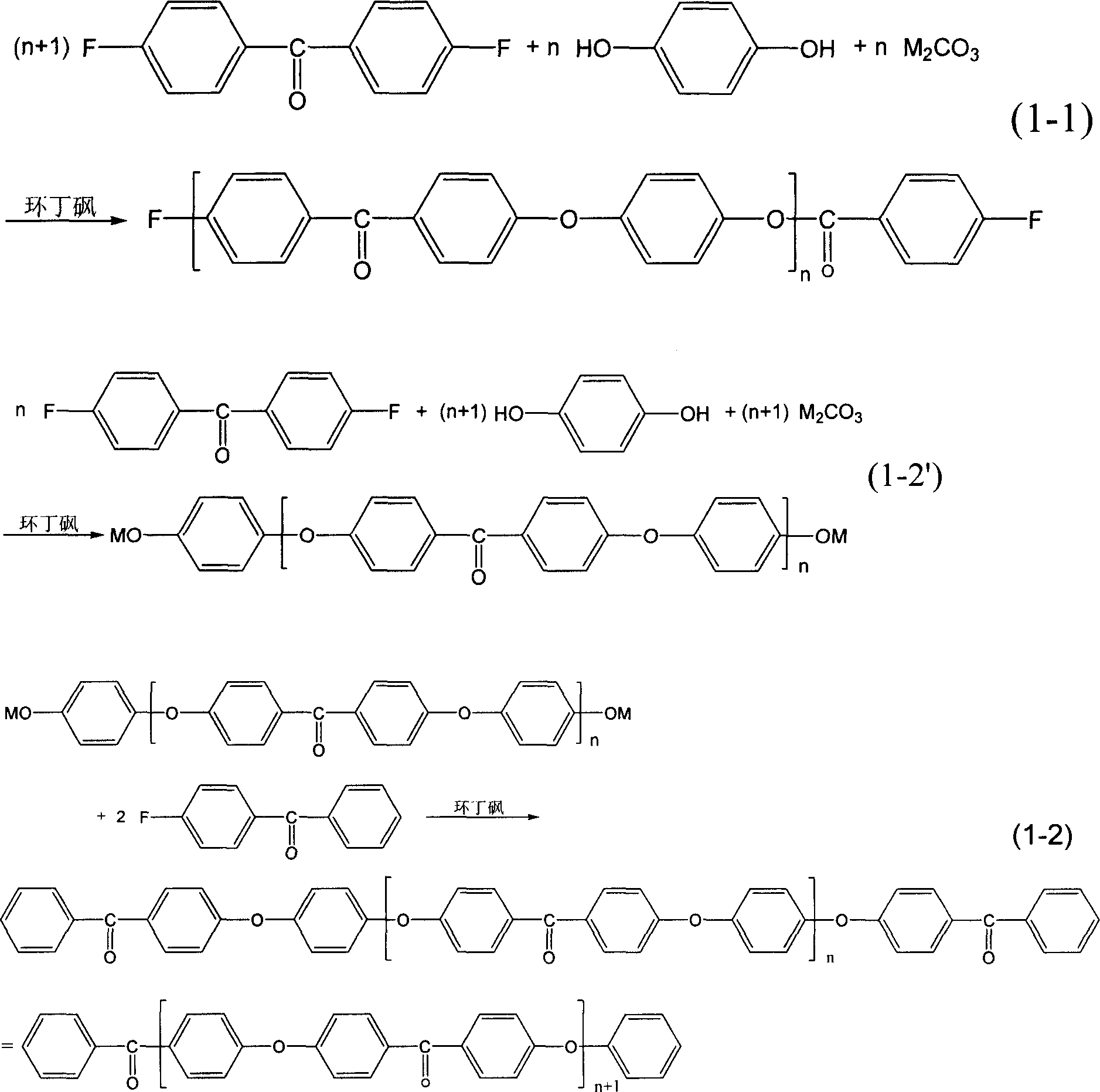Synthesis of polyether-ether-ketone resin with sulfolane as solvent
A technology of polyether ether ketone resin and sulfolane is applied in the field of sulfolane to prepare polyether ether ketone resin, which can solve the problems of high consumption, long process and unsafe hidden danger.
- Summary
- Abstract
- Description
- Claims
- Application Information
AI Technical Summary
Problems solved by technology
Method used
Image
Examples
Embodiment 1
[0015] First add 490g of refined sulfolane to a three-necked reaction flask equipped with a thermometer, nitrogen pipe, condensing water separator, and stirrer, and then add 67.11g (0.303mol, 1% excess relative to the amount of hydroquinone 0.30mol) , namely 0.30mol+0.30mol×1%=0.303mol) of 4,4'-difluorobenzophenone ( 33.03g (0.30mol) of hydroquinone (Available polymer 86.4g, solid content is 15%). After adding 74g xylene (15% of solvent) again, stir, heat (reaction bottle is put into corresponding electric heating mantle), treat that it all dissolves and when temperature rises to 80 ℃, add 25.73g (0.153mol, excess 2 %)K 2 CO 3 and 16.2g (0.153mol, excess 2%) Na 2 CO 3 , and then continue to heat up, when the temperature rises to 150 ° C, the system starts to azeotrope, xylene and water condense in the water separator, the upper layer of xylene refluxes, and the lower layer of water is continuously released. When the water is recovered to the theoretical amount, the uppe...
Embodiment 2
[0024] As in Example 1, add 490g sulfolane in the same reactor, then add 65.46g (0.30mol) 4,4'-difluorobenzophenone in sequence 33.36g (0.303mol) hydroquinone Thereafter, the order of addition, the amount of addition and the temperature rise reaction are completely the same as in Example 1. Only after 1.5 hours of constant temperature reaction, add 1.195g (0.006mol) of monofluoroketone The reaction was continued for 0.5 hours to stop the reaction. Subsequent refining and drying steps are completely the same as in Example 1.
[0025] Finally obtain the phenyl-terminated polyether ether ketone shown in (1-2) formula, record with DSC:
[0026] Tg=143℃
[0027] Tm = 334°C
[0028] The result of the thermostability measurement of product is:
[0029] Heating at 400°C for 5 minutes: MI = 18.6g / 10 minutes
[0030] Heating at 400°C for 30 minutes: MI = 16.9g / 10 minutes
[0031] 9% lower than the two. Compared with the 17% reduction in Exampl...
PUM
 Login to View More
Login to View More Abstract
Description
Claims
Application Information
 Login to View More
Login to View More - R&D
- Intellectual Property
- Life Sciences
- Materials
- Tech Scout
- Unparalleled Data Quality
- Higher Quality Content
- 60% Fewer Hallucinations
Browse by: Latest US Patents, China's latest patents, Technical Efficacy Thesaurus, Application Domain, Technology Topic, Popular Technical Reports.
© 2025 PatSnap. All rights reserved.Legal|Privacy policy|Modern Slavery Act Transparency Statement|Sitemap|About US| Contact US: help@patsnap.com

